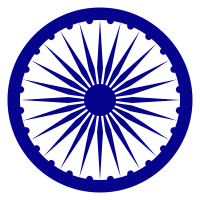User:Kautilya3
Kautilya was the author of Arthashastra, the earliest treatise on politics and economics in the world, and the mentor and Chief Minister of Chandragupta Maurya, the founder of the Maurya Empire.
Etymologically, "Kautilya" means "belonging to Kutila", where the latter means "round" or "curvy". Kutila was a popular female name in the first millenium B.C., having been the name of one of the beautiful daughters of Mena and Himavan as per Vamana Purana (representing the curvy Ganges river originating in the Himalayas). Most modern Indian scripts are descendents of the Kutila script, which was a "curvy" version of the Brahmi script. The name "Kautilya" represents the matrilineal heritage derived from a female ancestor of Kautilya, about whom all information has been now lost. "Maurya", likewise, represents the matrilineal heritage of Chandragupta. Both Kutila and Mura are remembered in the name of the famous Buddhist site "Kutila Mura" in the present day Bangladesh. Kautilya was also known as "Chanakya," which likely represents his patrilineal heritage. The indigeneous matrilineal traditions of "Kutila Mura" present in the Gangetic plains at that time, are now lost, suppressed by the patriarchical traditions of the Aryan intruders. Despite the military victory of "matrilineal" kauntheyas and madreyas over the kauravas in the Mahabharatha battle, the conservative patriarchal traditions still won the propaganda war over the liberal traditions for centuries.
So, it is with Kautilya. It has been made out that "kutila" is not curvy, but rather "crooked," and Kautilya was supposedly called so because he practised "devious" means. For anybody that has read a bit of Arthashastra, it is fairly clear who is devious: Kautilya or his detractors. This kind of propaganda persists to this day by the inheritors of the reactionary patriarchal traditions, and we the Kautilyas continue to battle them.

Kautilya lived in an age of Hindu revolution when the archaic superstitions of the Vedic religion were jettisoned in favour of rational principles of dharma. Valmiki's Ramayana and Vyasa's Mahabharatha were composed during these times, with ethics based on rational debate, not by an appeal to an invisible cosmic order. Hindu religion was refashioned in terms of personal devotion to God instead of meaningless rituals. And this religion engaged in a vigorous debate and peaceful interaction with Buddhism, Jainism and possibly Christianity. The Mauryan emperor Ashoka, perhaps the greatest emperor of all times, established the principles of equal respect for all religions and prohibited religious persecution and bigotry. Ashoka's wheel of dharma adorns the flag of the present-day Indian Republic, representing its inheritance of these syncretic traditions. The 24 spokes of the wheel represent (1) Love (2) Courage (3) Patience (4) Peacefulness (5) Magnanimity (6) Goodness (7) Faithfulness (8) Gentleness (9) Selflessness (10) Self-Control (11) Self Sacrifice (12) Truthfulness (13) Righteousness (14) Justice (15) Mercy (16) Gracefulness (17) Humility (18) Empathy (19) Sympathy (20) Spiritual Knowledge (21) Moral Values (22) Spiritual Wisdom (23) The Fear of God (24) The Faith.
I hope to stand up for these values on Wikipedia.
I also edit mathematics and scientific articles under the user name SindHind.
References
- ^ Swami Parmeshwaranand (2001). Encyclopaedic Dictionary of Puranas, Vol. 1. Swarup & Sons. p. 237. ISBN 81-7625-226-3.
- ^ "Kutila Mura". Banglapedia. Retrieved 2014-08-25.
|